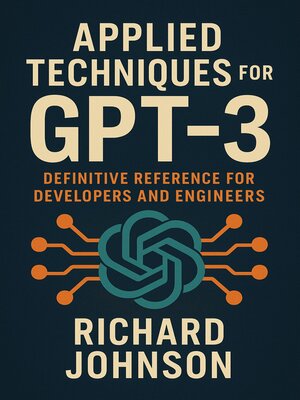Applied Techniques for GPT-3
ebook ∣ Definitive Reference for Developers and Engineers
By Richard Johnson

Sign up to save your library
With an OverDrive account, you can save your favorite libraries for at-a-glance information about availability. Find out more about OverDrive accounts.
Find this title in Libby, the library reading app by OverDrive.



Search for a digital library with this title
Title found at these libraries:
| Library Name | Distance |
|---|---|
| Loading... |
"Applied Techniques for GPT-3"
"Applied Techniques for GPT-3" offers practitioners, researchers, and engineers a comprehensive exploration of the cutting-edge methods and advanced workflows for leveraging GPT-3 in practical, large-scale applications. Spanning the technical spectrum from architecture mechanics to operational deployment, this authoritative resource establishes a deep foundational understanding of transformer models, tokenization, and large-scale training paradigms. Readers gain guidance on mastering prompt engineering, including optimal structuring, dynamic generation, and security-minded mitigation of vulnerabilities such as prompt injection.
The book rigorously details the strategies needed for fine-tuning and customizing GPT-3, incorporating state-of-the-art techniques like parameter-efficient tuning, domain adaptation, and bias mitigation. It delivers actionable insights on building robust data pipelines, ensuring generalization, and leveraging synthetic data for greater performance. Special attention is devoted to scaling and integrating GPT-3 into production ecosystems, featuring proven patterns for secure API consumption, orchestration in microservices environments, and continuous monitoring for resilience and business continuity.
Extending its breadth into emergent challenges and opportunities, "Applied Techniques for GPT-3" addresses the nuances of performance optimization, multi-modal fusion, and holistic evaluation. The text also foregrounds critical issues of security, compliance, and ethics—articulating responsible AI principles and societal impact analysis—while surveying next-generation advancements beyond GPT-3. This volume is an indispensable guide for professionals seeking to harness the full potential of large language models with technical rigor and practical foresight.







